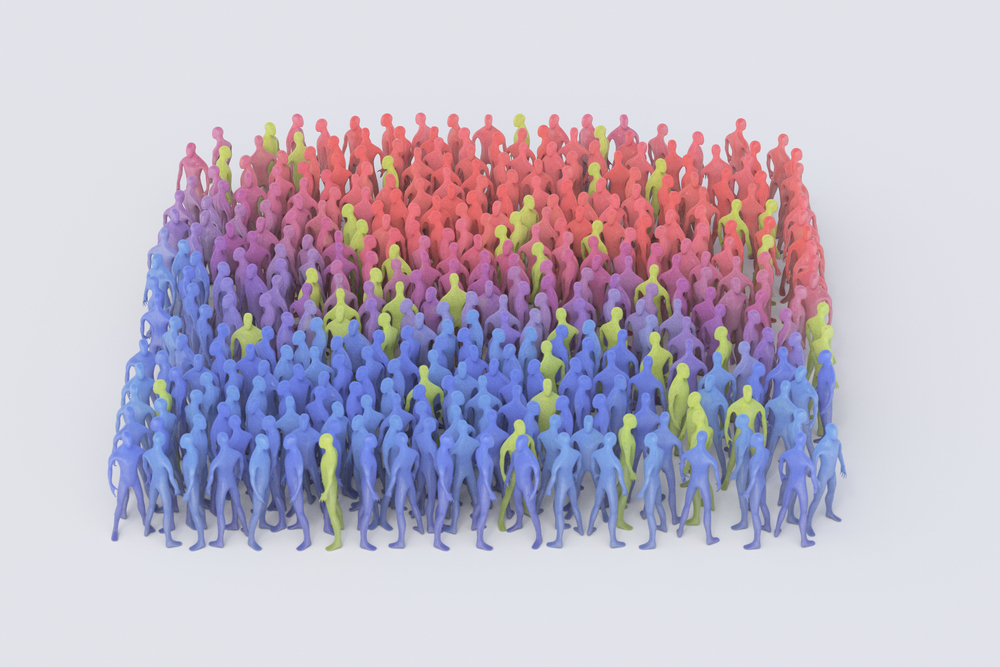
What Is Herd Immunity and Can It Be Achieved without Vaccines?
As you know, the COVID-19 pandemic is inching towards the two-year mark. There have been great strides in solving this public health crisis, including the development of several highly effective vaccines, but new and old challenges remain.
Among the most important of these challenges is eradicating the COVID-19 virus. It is possible to do so; we did exactly that with smallpox, a horrendous disease that afflicted humanity for millennia. We used a vaccine for smallpox to inoculate enough people so that the virus could not find any hosts and died out.
In the midst of a global pandemic, many people are asking if it is possible to achieve this kind of herd immunity with COVID-19. There is ongoing debate on this topic, but many experts believe that if 75 to 90 percent of the population could obtain immunity to COVID-19, the virus would die out.
What Is Herd Immunity?
Herd immunity is a term that denotes a population that is immune to a disease. Herd immunity does not mean that every member of that population is immune, but that a certain threshold of immune members has been attained so that the disease can no longer survive in this population.
Although not every member of the population may have natural or vaccine-conferred immunity, enough members do that almost everyone is protected. In any community there will always be people who cannot obtain immunity; this includes the very old, very young, and health compromised who are unable to survive a bout of the illness or receive a vaccine.
The threshold for herd immunity is based on the infectiousness and other characteristics of the illness. If the illness has a high rate of transmission, then more people need to be immunized or the illness could survive by infecting new hosts.
In most cases, herd immunity can be achieved when 50 to 90 percent of the population is immunized. In the case of COVID-19, most health experts believe that from 75 to 85 percent of people need to have immunity to starve the virus into submission.
How to Achieve Herd Immunity from COVID-19
There are two ways to obtain immunity to COVID-19: either become infected and recover, or receive a vaccine. In either case, that person should possess antibodies to COVID-19 that will allow their immune system to recognize and suppress the virus. How long those antibodies will remain present is not fully known yet.
Currently, there are 333 million people in the United States. So far, there have been 34.6 million reported cases of COVID-19, which translates into about 10 percent—although some health experts believe this figure could be just a fraction of the actual number.
Furthermore, almost 163 million Americans have been fully vaccinated against COVID-19. This 50 percent plus the 10 percent that are naturally immunized only totals about 196 million, far short of the minimum of 250 million that would be required to completely suppress the virus.
The number of vaccinated is likely to grow, especially if a vaccine is approved for children, but it seems unlikely that herd immunity can be achieved in the U.S. Without the available vaccines the minimum threshold for herd immunity would be so far out of reach that it would be virtually impossible.
The Obstacles to Herd Immunity
One of the biggest challenges to achieving herd immunity in the United States is vaccine hesitancy. One study found that vaccine hesitancy was at 27.5 percent in January of 2021, but this fell to 22 percent in March. Nearly half of all poll respondents cited side effects as the primary concern, but another third said they thought they didn’t need it. Others lacked trust in the government or disliked vaccines.
Perhaps the greatest issue stopping the U.S. from achieving herd immunity is distrust in the COVID-19 vaccines themselves. Many of these people do not trust vaccines in general due to spurious arguments that they have been linked to autism or that they may infect you with COVID-19.
Still others may trust vaccines in general, but they may not trust COVID-19 vaccines. Many people are skeptical of the accelerated development of these new vaccines which involve never before used technologies like mRNA. Many of these people are suspicious of any product that has been rushed through the development process and are waiting to see if any health concerns arise.
Another major concern is about the efficacy of the new vaccines. Although extensive testing of the Moderna and Pfizer vaccines show that they are more than 90 percent effective at warding off infection and serious symptoms, while the Johnson & Johnson is more than 70 percent effective, many remain unconvinced that such a new product can be so successful.
To be realistic, there is some validity to this concern. The testing on these vaccines is only in a narrow window of less than a year, and studies show that there is waning efficacy over time—but this is true of many other vaccines. Furthermore, it is better to have some protection against COVID-19 even if you have to get a booster shot at some point down the road.
What is more concerning to many health experts is the emergence of new strains of COVID-19 like the delta variant. Although the three vaccines in the U.S. do offer sufficient protection against them, at least initially, it is unknown what the long-term implications are. Moreover, if a new strain emerges that is more resistant to our current vaccines, then the pandemic could worsen considerably.
Finally, there is the issue of vaccine hesitancy in the global community. It is not enough for the United States to achieve herd immunity by itself, especially if much of the world is not immunized. These unvaccinated populations would serve as breeding grounds for new mutated versions of COVID-19 that could be even more infectious and virulent. If the entire world can’t achieve herd immunity, then every human being remains at risk of COVID-19 infection.
Article written by: Dr. Robert Moghim – CEO/Founder Colorado Pain Care
M.D. Disclaimer: The views expressed in this article are the personal views of Robert Moghim, M.D. and do not necessarily represent and are not intended to represent the views of the company or its employees. The information contained in this article does not constitute medical advice, nor does reading or accessing this information create a patient-provider relationship. Comments that you post will be shared with all visitors to this page. The comment feature is not governed by HIPAA, and you should not post any of your private health information.



